“Storm Of Steel”: Stuning Design Of Body Armor In The First World War, 1914-1918
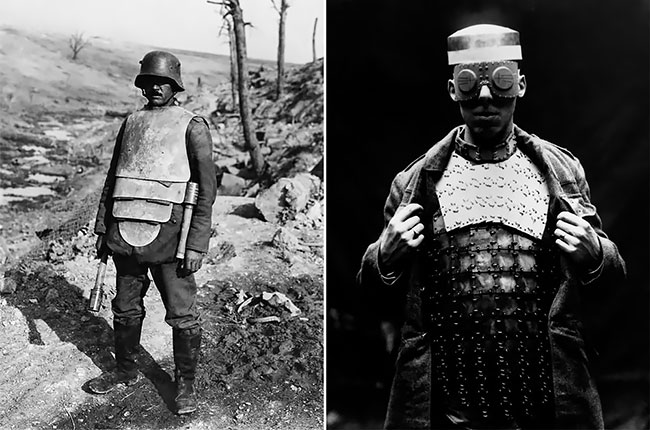
During the First World War, the size and scale of some of the weaponry produced devastating wounds and losses on soldiers. In order to provide some protection to the men in the front lines, armies explored the possibility of providing them with different types of armor.
Soldiers in the British army at the outbreak of the war were not provided with much in the way of protective clothing. The British military uniform for the time was made of hard-wearing brown khaki which did, at least, provide a measure of camouflage in the fields of France and Belgium but was not designed to provide any protection to the body of the wearer.
The British and French armies began to equip men with steel helmets in 1915 in a bid to protect the heads, one of the most vulnerable parts of the body in trench warfare, of their men from falling debris and glancing blows from bullets or shrapnel. Despite the utility of these helmets, they still left something to be desired. The German-designed Stahlhelm provided better protection to both the head and the shoulders of their soldiers. These helmets became so synonymous with the German army that allied nations proved reluctant to design similar headwear in case it led to confusion in the trenches.
h/t: vintag.es
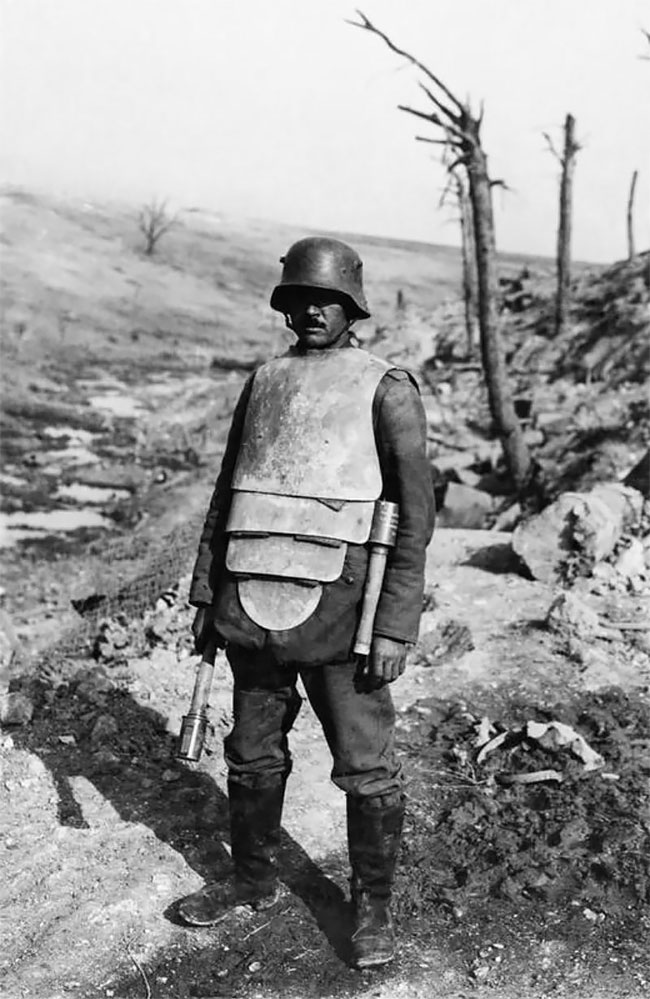
A German member of a “Trench Attack Squad” poses in steel body armor and two stick grenades. The armor, capable of stopping a pistol round but only superficially helpful against rifle fire, also helped protecting against bayonet and other edged weapons thrusts. (Getty Images)
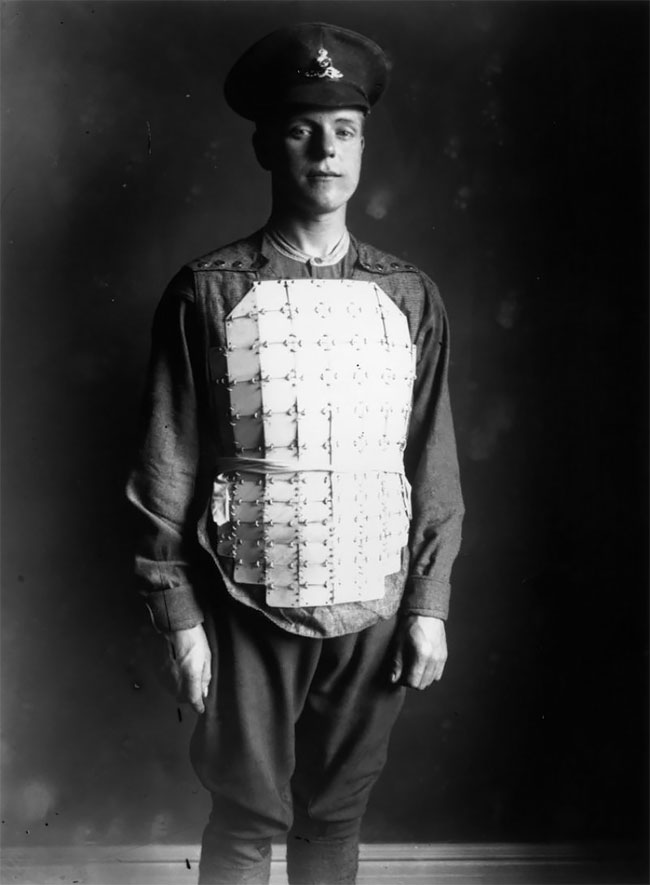
A soldier wear body armour made of linked steel plates covering his chest and abdomen, ca. 1914. (Getty Images)
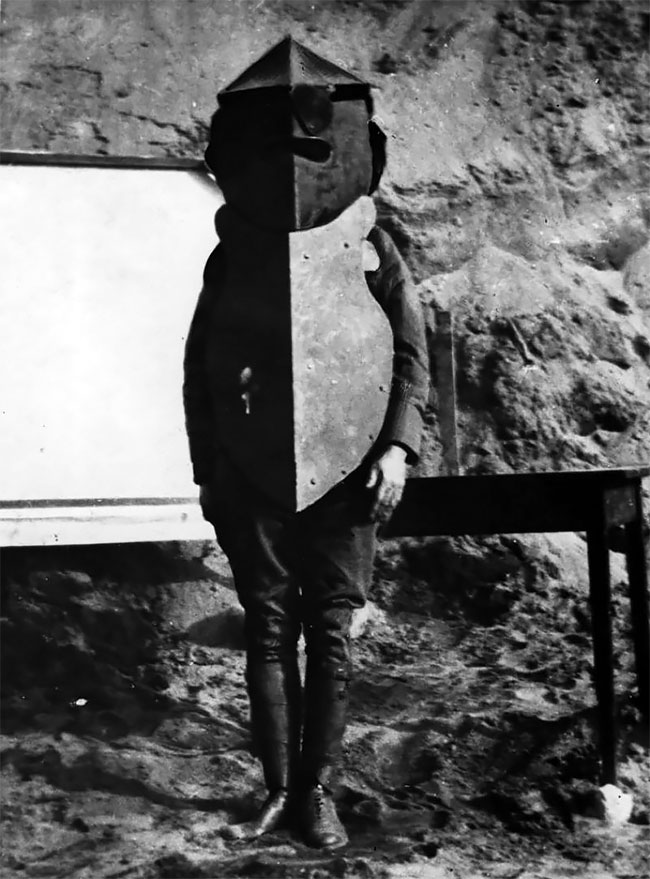
A suit of heavy body armour used by the Americans in France, ca. 1917. (Getty Images)
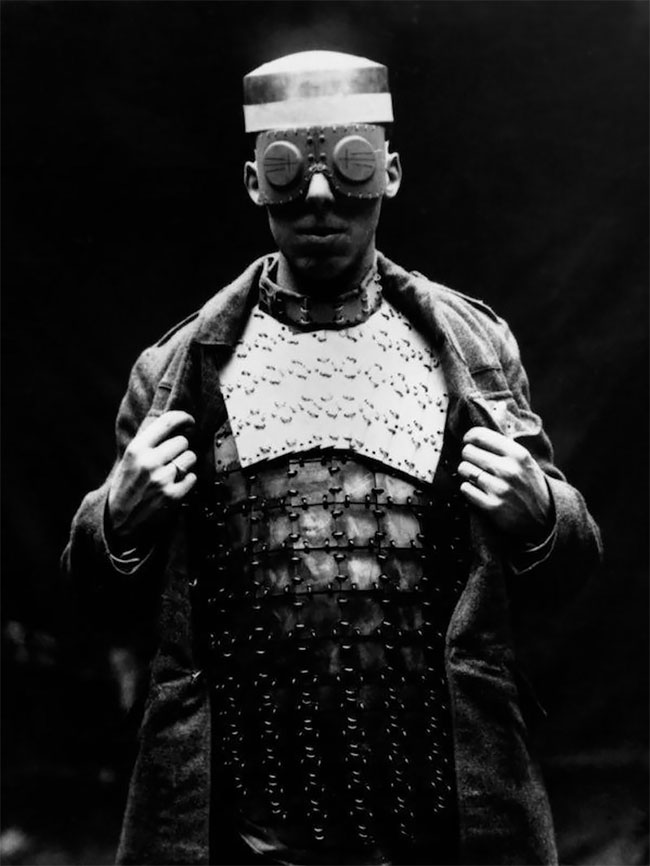
American soldier trying on captured German body armor, 1918. (Getty Images)
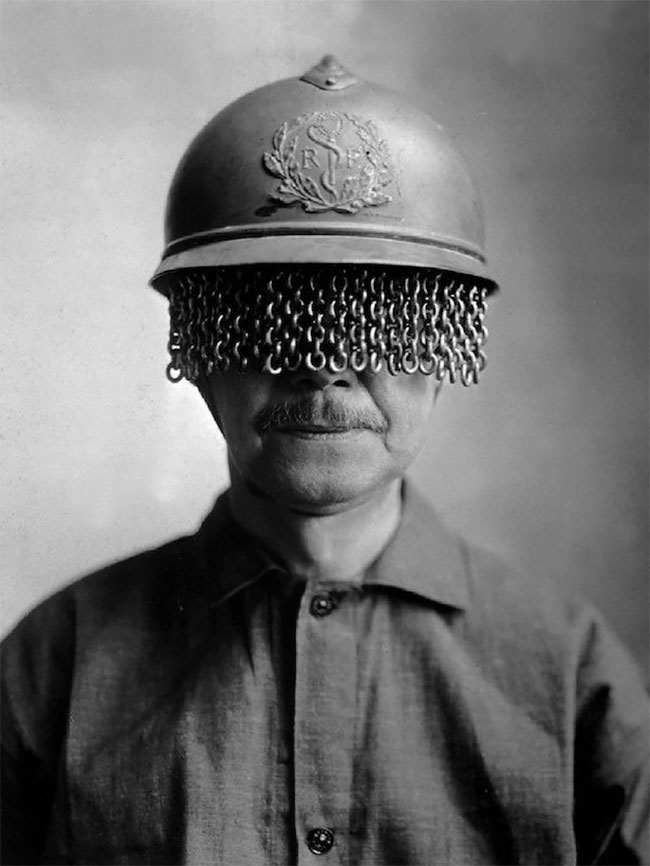
A man models a steel helmet covered with a built-on chain screen to protect a soldier’s eyes from rocks, shells and other fragments during World War I. It was created by E J Codd Company of Baltimore, Maryland. (Getty Images)
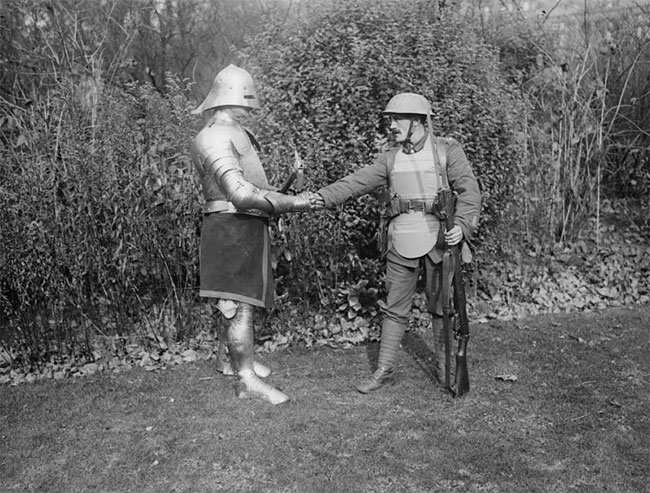
October 1917: A present day soldier armed with a rifle shakes hands with a soldier in a full suit of armour armed with an axe. (Getty Images)
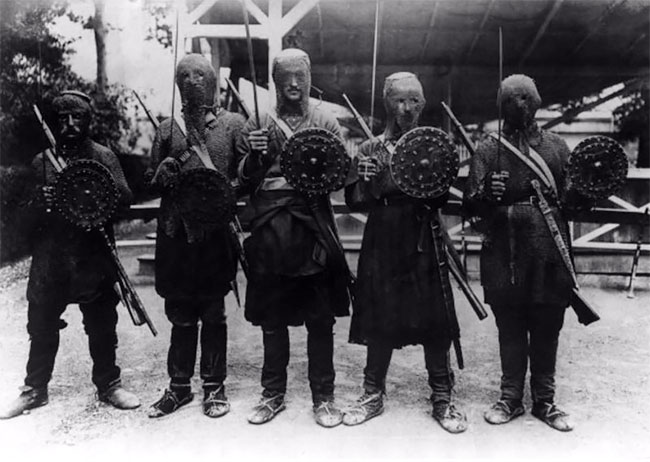
Georgian warriors of the Khevsur tribe wearing the traditional suit of armor. May/June 1918. (Getty Images)
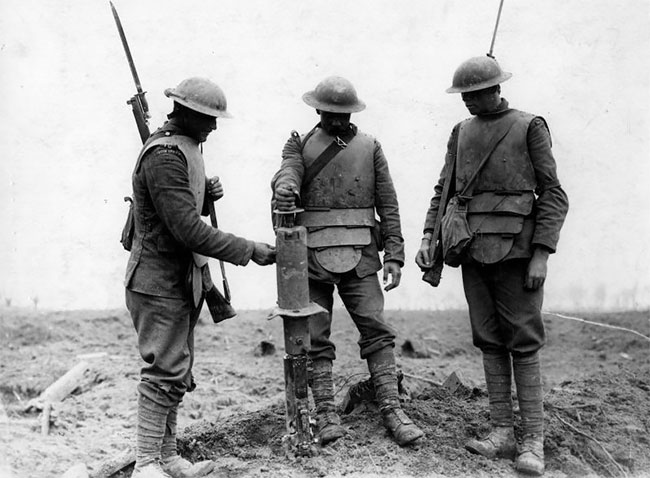
Three Irish Guards wearing German body armor, examining a captured German machine gun, at Pilckem Ridge, July 31st 1917. (Getty Images)
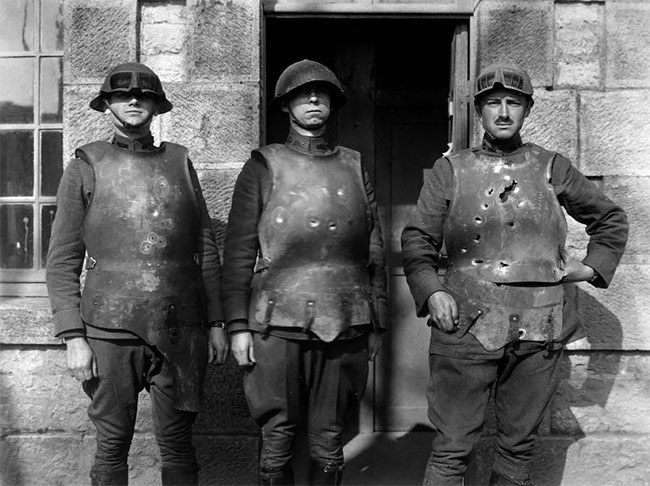
Exhibiting pock marks and bullet holes, three members of the Ordnance Department demonstrate the effects of pistol, rifle and machine gun fire upon body armor, during testing at Fort de la Peigney, Langres, France. 1918. (Getty Images)
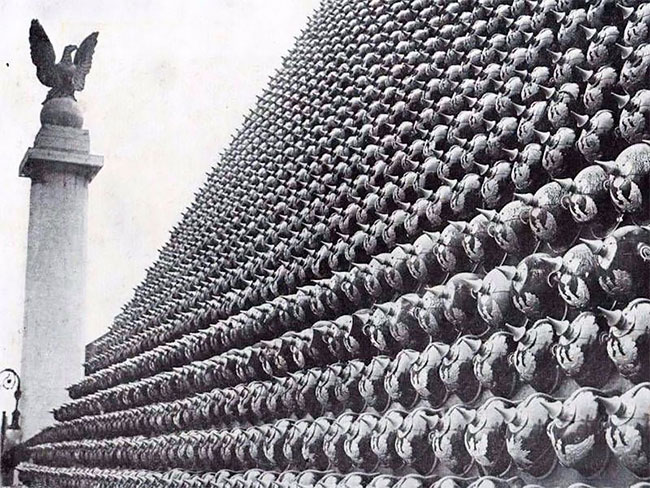
A series of German helmets displayed as a trophy in the U.S., 1918. (Getty Images)

